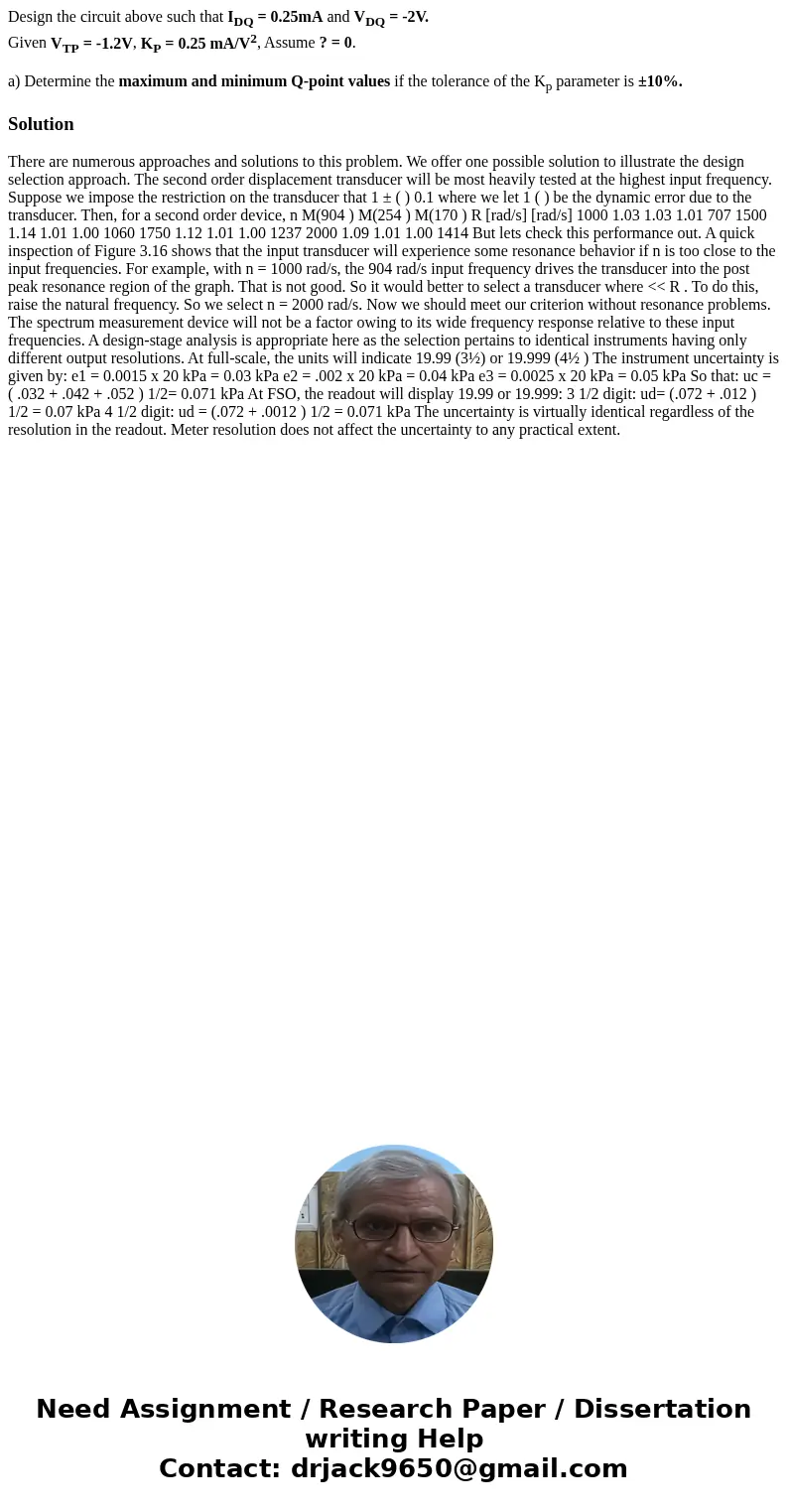Design the circuit above such that IDQ 025mA and VDQ 2V Gi
Design the circuit above such that IDQ = 0.25mA and VDQ = -2V.
Given VTP = -1.2V, KP = 0.25 mA/V2, Assume ? = 0.
a) Determine the maximum and minimum Q-point values if the tolerance of the Kp parameter is ±10%.
Solution
There are numerous approaches and solutions to this problem. We offer one possible solution to illustrate the design selection approach. The second order displacement transducer will be most heavily tested at the highest input frequency. Suppose we impose the restriction on the transducer that 1 ± ( ) 0.1 where we let 1 ( ) be the dynamic error due to the transducer. Then, for a second order device, n M(904 ) M(254 ) M(170 ) R [rad/s] [rad/s] 1000 1.03 1.03 1.01 707 1500 1.14 1.01 1.00 1060 1750 1.12 1.01 1.00 1237 2000 1.09 1.01 1.00 1414 But lets check this performance out. A quick inspection of Figure 3.16 shows that the input transducer will experience some resonance behavior if n is too close to the input frequencies. For example, with n = 1000 rad/s, the 904 rad/s input frequency drives the transducer into the post peak resonance region of the graph. That is not good. So it would better to select a transducer where << R . To do this, raise the natural frequency. So we select n = 2000 rad/s. Now we should meet our criterion without resonance problems. The spectrum measurement device will not be a factor owing to its wide frequency response relative to these input frequencies. A design-stage analysis is appropriate here as the selection pertains to identical instruments having only different output resolutions. At full-scale, the units will indicate 19.99 (3½) or 19.999 (4½ ) The instrument uncertainty is given by: e1 = 0.0015 x 20 kPa = 0.03 kPa e2 = .002 x 20 kPa = 0.04 kPa e3 = 0.0025 x 20 kPa = 0.05 kPa So that: uc = ( .032 + .042 + .052 ) 1/2= 0.071 kPa At FSO, the readout will display 19.99 or 19.999: 3 1/2 digit: ud= (.072 + .012 ) 1/2 = 0.07 kPa 4 1/2 digit: ud = (.072 + .0012 ) 1/2 = 0.071 kPa The uncertainty is virtually identical regardless of the resolution in the readout. Meter resolution does not affect the uncertainty to any practical extent.

 Homework Sourse
Homework Sourse